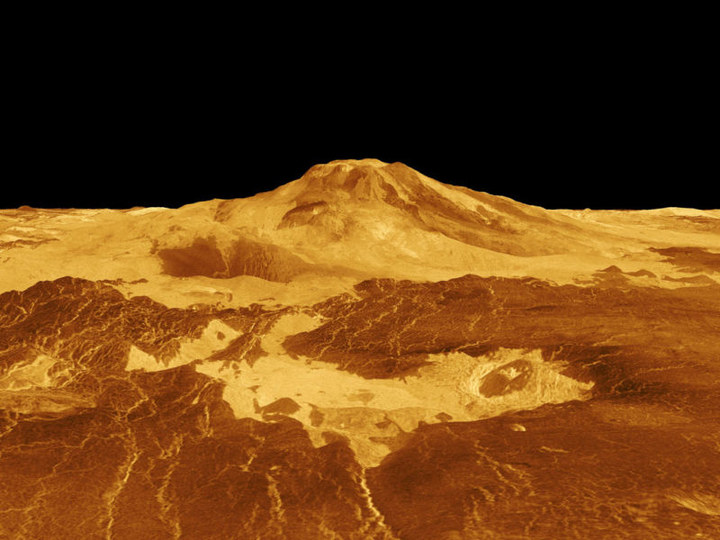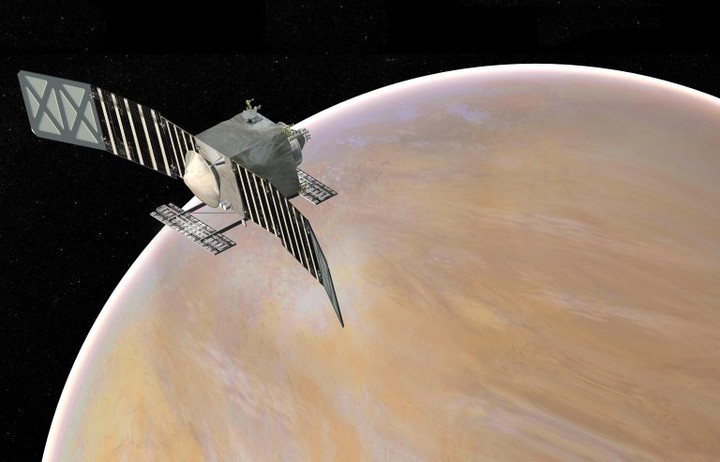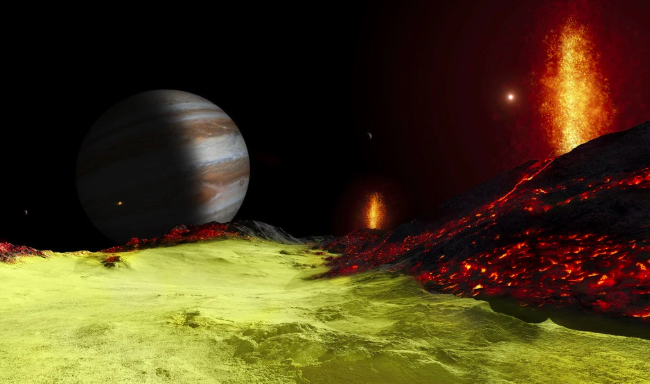0 1280w, https://s3.ifanr.com/wp-content/uploads/2020/02/345-360×203.jpg 360w, https://s3.ifanr.com/wp-content/uploads/2020/02/ 345-768×433.jpg 768w, https://s3.ifanr.com/wp-content/uploads/2020/02/345-1024×577.jpg 1024w “sizes =” (max-width: 1280px) 100vw, 1280px “> < / p>
For many scientists, studying Venus is a distant dream.
The surface of this hell-like planet is 900 degrees Fahrenheit, and there is a thick cloud of sulfuric acid, which is full of dense carbon dioxide.
Researchers plan to launch a spacecraft into Venus’ atmosphere and let this “probe” fall into the hot sky of Venus. The “probe” will fall from top to bottom in a period of about one hour. Measure the chemical composition and forming conditions of the atmosphere throughout the height of the poster.
At the same time, the camera on the descent ball and the orbiter performing the task will also map Venus’s surface rock types and image the surface.

▲ DAVINCI mission concept map. Image credit: NASA / Goddard
This timeThe new mission will help us understand how the atmosphere is formed and whether there are oceans on Venus’ surface.
In 1978, the U.S. Pioneer Venus probed Venus’ atmosphere. The orbiter Messenger launched in 1989 became the last mission to Venus.
If the DAVINCI + mission goes well, it will be the first spacecraft to be brought into Earth’s atmosphere by NASA since 1978.
VERITAS
VERITAS is another mission to detect Venus.
It means “Venus emissivity, radio science, interferometric radar topography, topography and spectroscopy.”
In layman’s terms, the mission is to map the surface of Venus, understand its geological history, and see why it has evolved so differently from Earth.
After all, Venus has always been considered the twin of Earth. Its size, density, and internal structure are all similar to the Earth. But Venus has evolved into an extremely desolate place.

▲ Maat Mons model of one of Venus volcanoes. Image from: nasajpl
The VERITAS mission will carry a synthetic aperture radar instrument on an orbiting spacecraft to view Venus’s atmosphere and measure the planet’s surface on almost the entire planet, eventually drawing a complete geological map of the surface.
This information will eventually answer several important questions about Venus.
Including VenusWhether it has plate tectonics, volcanic activity, and how Earth and Venus have evolved along completely different paths.

▲ VERITAS spacecraft concept map. Image source: NASA / JPL-Caltech
The lead investigator proposed by VERITAS, said Suzanne Smrekar, a researcher at NASA’s California Jet Propulsion Laboratory:
We are exploring a world that was originally livable but lost.
After the “Magellan” Venus probe set off from Earth in 1989, it “stared” at thick clouds on Venus, and mapped the planet’s volcanic landscape for the first time.
To this day, we still don’t know what exactly is on the surface of Venus.
This mission will produce the first ever Venus surface composition map.
IVO
IVO stands for Io Volcano Observer.
Io is the fourth largest satellite in the solar system and the most active place for volcanoes in the solar system.
< / p>
▲ 1997 Io image captured by NASA’s Galileo spacecraft.
This satellite, with more than 400 volcanoes, can eject surface air columns up to 500 kilometers. The strong gravitational pull from nearby Jupiter liquefies and pulls Io’s interior through tidal forces, just like the tidal action of the Earth’s oceans.
This mission will allow IVO to orbit Jupiter and pass by Io to understand how tidal forces shape planets.
Most importantly, it will help us understand if there is a magma ocean inside IO.
This is important, but we have n’t heard much about it. According to Alfred McEwen, lead researcher for the IVO mission at the University of Arizona:
The magmatic ocean is the key to the early development of all internal planets (including Earth and Moon) and exoplanets. Therefore, studying today’s magmatic oceans will be a major advance.

▲ Picture from: Magnolia Box
IVO will assess the magma on Io by flying over it closely